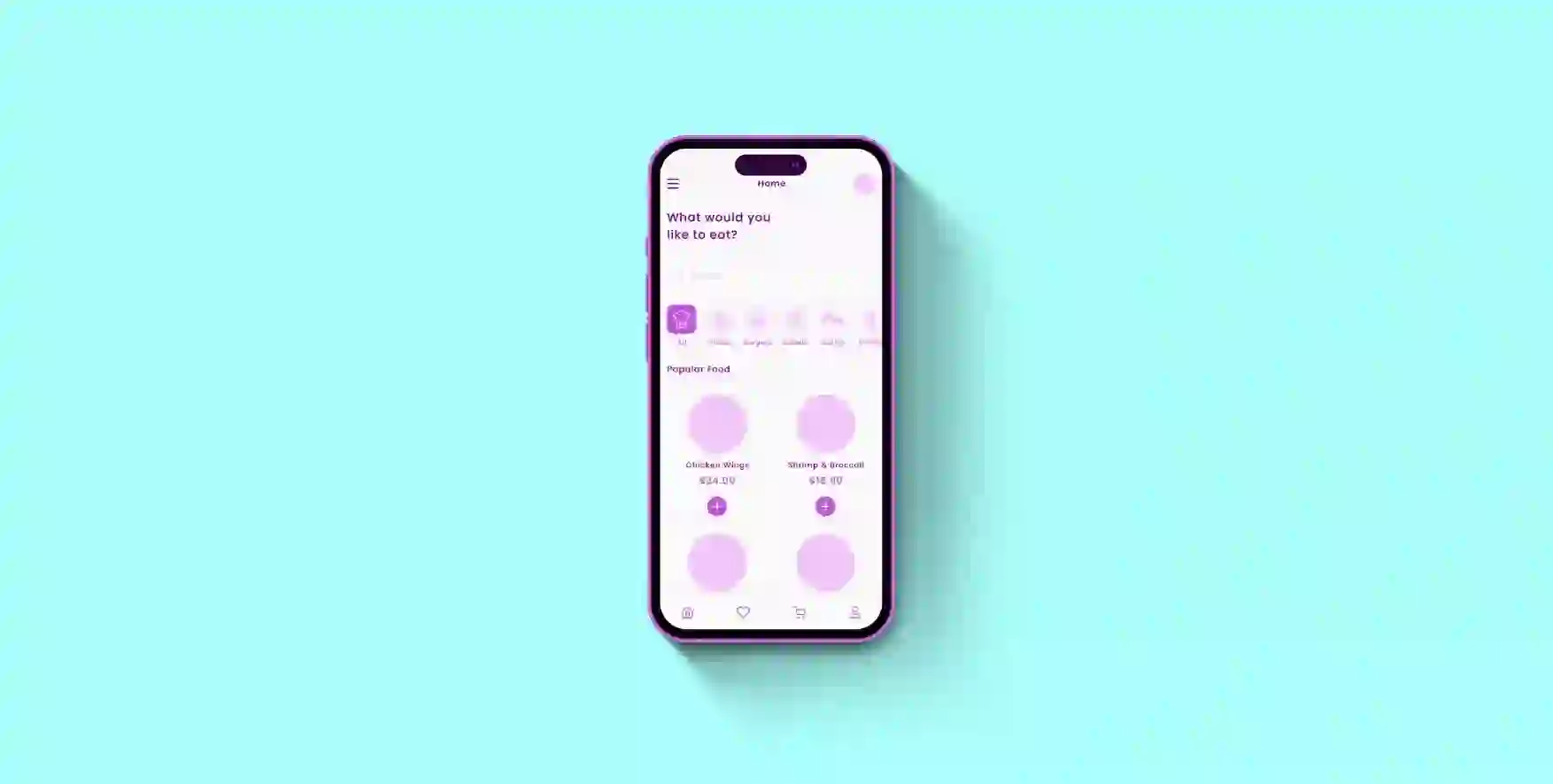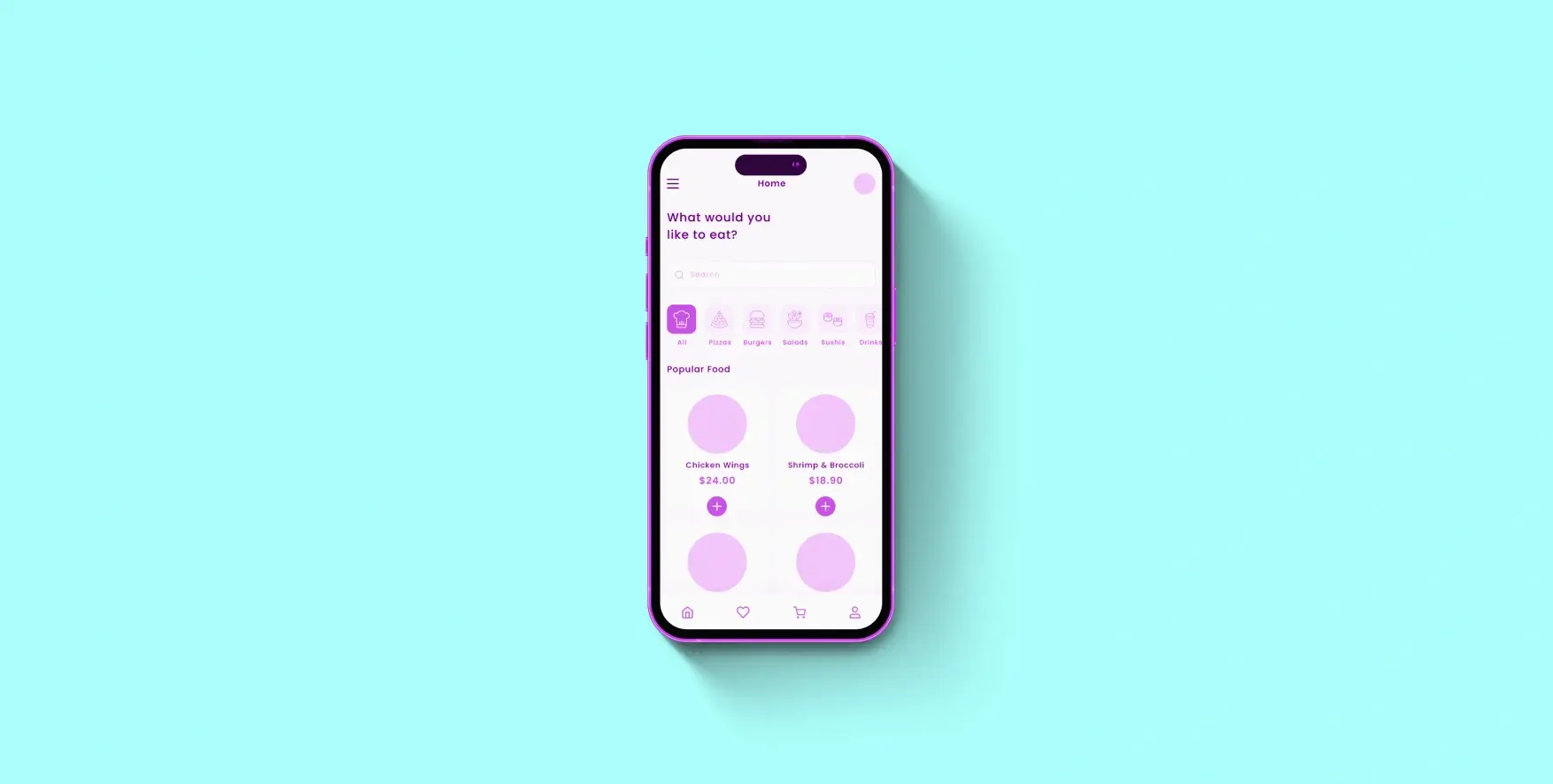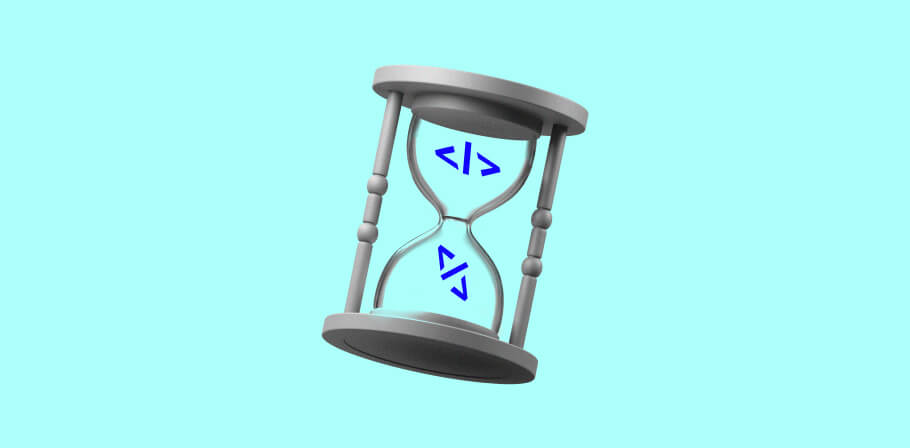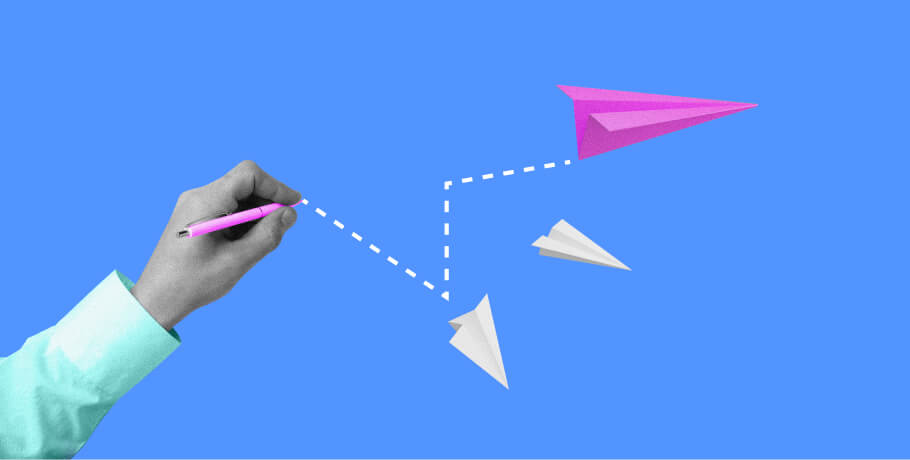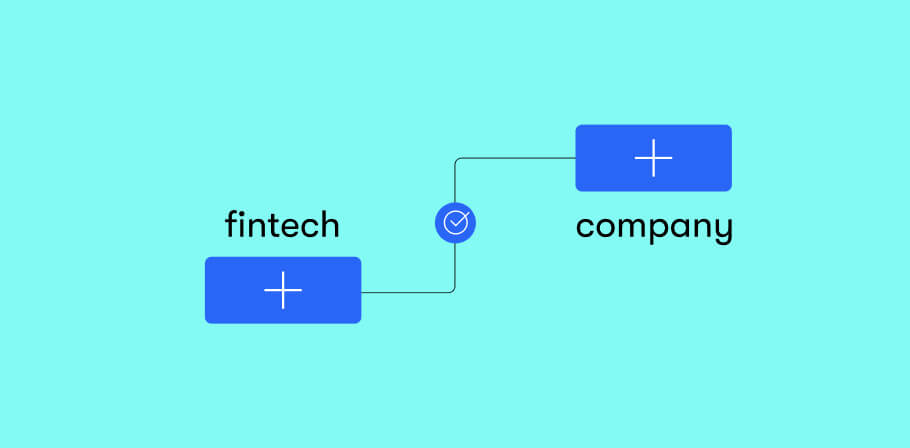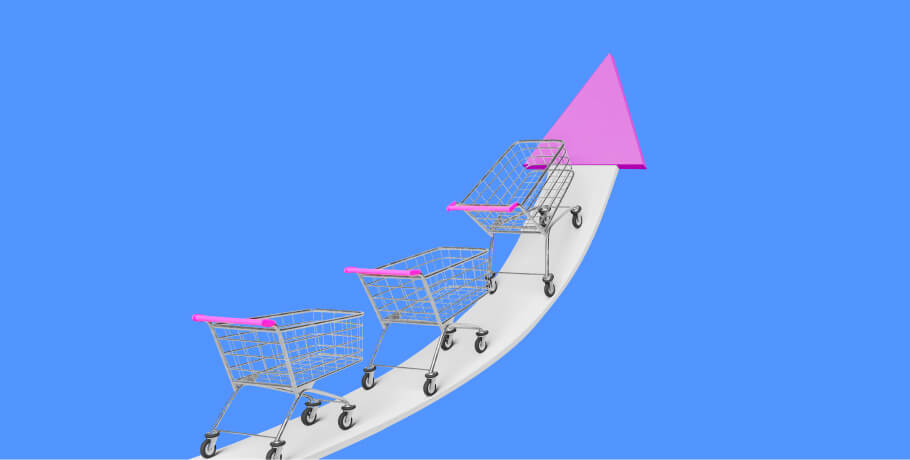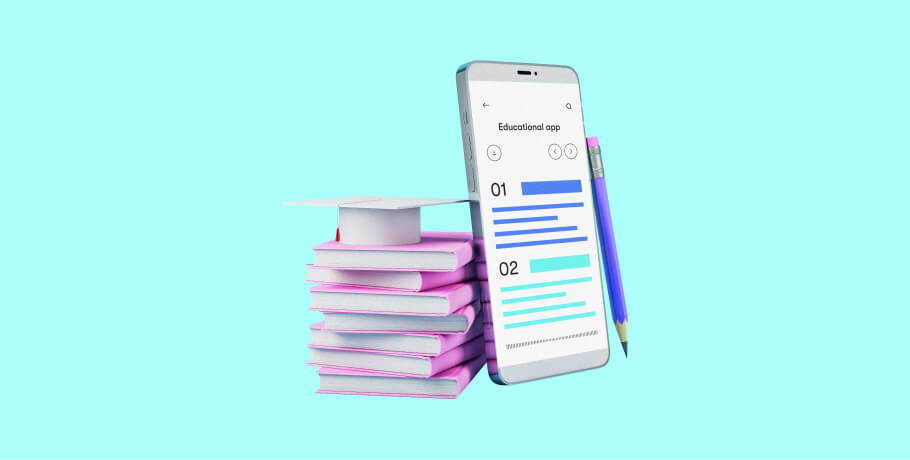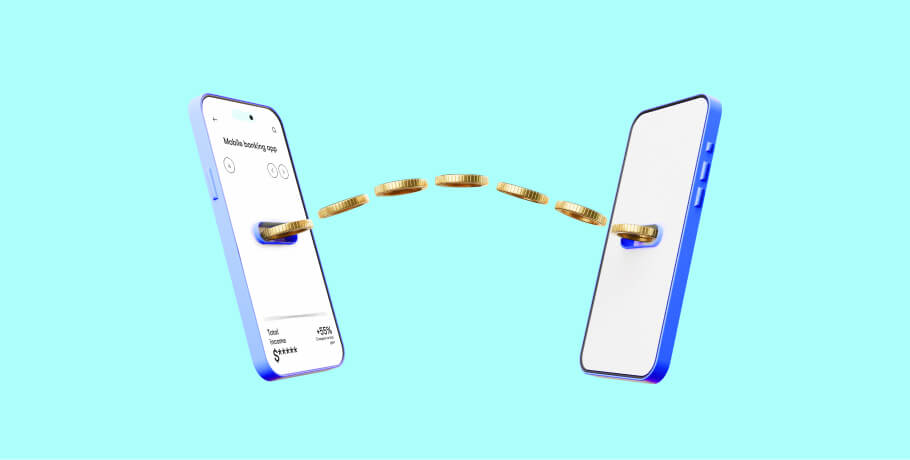Food delivery has long been popular, but the concept gained a significant amount of traction with the release of food delivery apps and achieved additional growth during the pandemic. Many of the apps serve as a sort of restaurant aggregator, allowing people to use a smartphone to order meals online from a variety of restaurants. Allowing users to also shop at grocery stores or other businesses further broadened the appeal.
While there are several big players in the food delivery app space, the market isn’t oversaturated. As a result, figuring out how to make a food delivery app is often a lucrative venture. If you want to build an app like UberEats, here’s what you need to know about creating a food delivery app.
The food delivery apps industry right now
The online food delivery market is massive — experts forecast that the 2024 revenue will reach US$1.22tn.
With an anticipated compound annual growth rate (CAGR) of 12.78 percent, that means the market value should reach $1.65 trillion by 2027. As a result, the food delivery app space isn’t just sizeable today; it’s predicted to expand rapidly over the coming years. That’s excellent news for any business that wants to build a food delivery app.
Currently, online food delivery is dominated by three primary companies. DoorDash leads the way with 65% of the US market (as of February 2023). UberEats and Grubhub come in behind DoorDash, though they hold enough market share to be significant players.
Food delivery app business models
There are several food delivery app business models that are worth considering. For companies that want to keep their ecommerce venture simple, using the order-only model at the center of their food delivery app development plan is potentially wise. However, the order-and-delivery model can create more opportunities for earnings. Here’s a breakdown of what the two entail.
Order-only model
With an order-only food delivery service, you make a food delivery app that allows customers to connect with a variety of restaurants or retail stores in their area and place orders, more like a sort of marketplace. However, your company doesn’t manage the actual delivery. Instead, the restaurant or retailer ensures that food or goods arrive at the user’s location.
Here’s a look at the steps involved:
- The customer explores local restaurants using your food delivery app
- They select items they’d like to purchase and complete their order, including supplying payment
- The restaurant receives the order and makes the food
- The restaurant packs the food up for delivery and passes it to an internal delivery person
- The delivery person brings the order to the customer
Order-and-delivery model
The order-and-delivery model is the approach used by many leading food delivery apps, such as UberEats. The main difference is that the platform manages the delivery of any customer orders instead of the retailer or restaurant.
Here’s an overview of the order-and-delivery model:
- Customers explore local restaurants using your food delivery app
- Customers select items they’d like to purchase and complete their order, including supplying payment
- The restaurant receives the order and makes the food
- The restaurant packs the food up for delivery
- A delivery driver associated with the food delivery app picks up the order
- The delivery person brings the order to the customer
How does a food delivery app make money?
Before you begin with food ordering app development, having a monetization plan is essential. Fortunately, there are several ways to make money as the platform owner. Here are some classic approaches.
Delivery fees
When you create a food delivery app, delivery fees are one of the most straightforward ways to monetize the platform. Along with being a source of revenue, it can also ensure that any driver-related costs accrued through the order-and-delivery model are adequately covered.
When you build your own food delivery app, you can approach delivery fees one of two ways. Using a flat fee is often simplest, but you may need to limit the delivery area — especially if you’re compensating delivery drivers directly — to make it profitable. You can also use a dynamic fee that adjusts for the distance between the restaurant and the customer, current traffic conditions, or other factors.
Service fees
When you create a food ordering app, you can charge service fees to both listed restaurants or retailers and customers. Usually, retailer or restaurant fees take the form of a commission. Essentially, they provide the platform with a payment based on a percentage of the total value (before delivery charges or fees) of a customer’s order.
On the customer end, service fees are also an option. Often, these are akin to convenience fees and provide a source of revenue to the platform. Service fees for customers are a potential wise addition across the board, but they’re particularly valuable if your platform offers a pickup option instead of just delivery, ensuring there’s suitable revenue from those transactions. Small order fees are also an option, as those can help compensate for less revenue being received through fees or commissions from the restaurant.
Promotions and advertising inside the app
Another revenue-generating strategy that’s worth considering as you learn more about how to start a food delivery app is promotions and advertising inside of the app. For example, you could allow restaurants or retailers to pay a fee to improve their position in a customer’s results list when they look to place an order. You could also include banners in your app to host a wide array of advertisements.
Premium tier fees
A popular monetization option worth considering is a premium tier option for customers. These work by charging customers a monthly fee to secure some form of elevated service. For example, a premium customer may be exempt from delivery fees if their order total exceeds a specific dollar amount.
This option may increase customer usage of the app, which usually means more commissions for your platform. As a result, even if the removal of a delivery fee is part of the premium tier, service fees generated from higher usage, along with the monthly fee to access the service tier, can provide suitable revenue.
GET YOUR FOOD DELIVERY APP DONE RIGHT
Get our product engineering team on board to enter the food delivery market with a truly competitive app.
Must-have features of food delivery apps
A critical part of successful food delivery application development is ensuring must-have features are in place. Otherwise, your app may fail to meet customer or restaurant and retailer expectations, lowering the rate of adoption and harming your reputation.
The features needed depend on who is engaging with your food delivery app. Here’s a breakdown that helps show what’s needed where.
Customer app
The customer app is how customers will engage with your platform. Here are some must-have features for the customer app.
- Restaurant and retailer search: Several search options need integrating as you move forward with food app development. Having the app start by using geolocation to provide a list of nearby locations on launch is wise. However, it’s also critical to have a search bar, filters, and similar options that allow users to narrow down their choices.
- Order placing: As customers identify a restaurant and decide to place an order, your app needs features that keep that simple. Incorporate a streamlined checkout process that accepts popular payment options.
- Order tracking: After a customer places an order, they need a streamlined way to monitor its progress. This includes an area where they can see status updates, as well as a location-based option that leverages GPS to see the delivery driver’s location in real time. Location Framework for iOS and Google Location API for Android are both ways to implement the GPS-based functionality.
- Push notifications: Push notifications allow the app to provide information to customers after they place an order, even if they don’t have the application open. Additionally, it can serve as a means to advertise deals, discounts, and promotions or simply remind customers that your app is available.
- Reviews: Giving customers a way to submit feedback about their experience is essential. Make sure you have a quick way for them to alert your company if something goes awry, as well as the ability to leave visible reviews about their experience with individual restaurants or retailers.
Restaurant app
Through the restaurant (or retailer) app, businesses can manage their listings and the partnership with your platform. Here is an overview of critical features for this part of the app.
- Listing management: With the listing management portion of the app, the restaurant can update how it's presented through your platform. For example, they should be able to update their menu items (including descriptions and photos) and change their pricing.
- Order management: In the order management section, restaurants can review incoming orders to ensure they’re fulfilled within the right time frame. Additionally, it should have tools that allow them to accept or decline orders, as well as update the status.
- Reviews: Giving restaurants the ability to review and respond to customer reviews is essential. Make sure they can see individual ratings and customer comments, as well as have the ability to reply.
Courier app
The courier app ensures that delivery drivers through your platform or a third-party partnership can access information about orders they’ll pick up and deliver. Here are some key features the courier app must include.
- Order claiming: Drivers need a screen that allows them to view the available orders and claim the one they’d like to pick up and deliver. It should include details about the distance of the route, order value, and potential earnings from a successful delivery.
- GPS for turn-by-turn directions: While many delivery drivers are likely familiar with the cities they operate in, they won’t know every street by heart. That’s why having integrated GPS with turn-by-turn directions is essential, as it ensures drivers will reach the correct restaurant and successfully deliver the order to the customer.
- Earnings tracker: Having a built-in earnings tracker helps drivers by showing how much they’ve made while performing deliveries through the app. Usually, this feature includes a list of all orders they’ve claimed, how much they earned from the platform, and any tips received. Along with ensuring they know about the size of their deposit once the pay cycle is completed, the earnings tracker can help those working as independent contractors effectively plan for their taxes.
- Expense tracking: Drivers often incur expenses that may be tax-deductible, depending on their location. Having a built-in expense tracker simplifies the monitoring of those costs, giving drivers extra value.
- Admin panel: The admin panel is where the platform owner and their team members manage the platform and its user base. Here are some critical features for an admin panel.
- Restaurant manager: The restaurant manager allows the platform owner to see which restaurants joined the platform and the details the restaurants entered. It also gives your company the ability to delete restaurants if issues arise, such as repeated reports of poor service.
- Customer manager: With the customer manager, you have the ability to manage customer-related issues. For example, you can check logs to see if a reported delivery issue needs addressing. You can also ban customers who acted inappropriately while using your service.
- Analytics: Built-in analytics features allow you to gather information that can boost revenue. For example, you can see which restaurants are popular and profitable, what times of day are associated with higher demand, and more.
- Payment and fee manager: With the payment and fee manager, you can update information about commissions, service fees, or delivery charges.
- Coupon and discount manager: The ability to provide coupons or discounts through the app gives you a way to entice customers to order more. You can have seasonal promotions, discounts that encourage customers to try something new, and more.
How much does it cost to develop a food delivery app?
The cost of developing a food app delivery app may fall between $40,000 and $150,000, with the median price at around $70,000 based on market benchmarks and average hourly rates. How much it costs to develop a food delivery app varies depending on a wide array of factors, such as feature sets, the presence of integrations, and more. As a result, you need to look at the typical expenses you’ll encounter to estimate software development costs. Here’s what you need to consider.
Developer expenses
Usually, developer expenses are one of the most significant costs associated with food delivery app development. Designing an app requires a substantial amount of expertise, and you’ll usually need IT professionals who specialize in different areas to achieve the best result. For example, you may need UI/UX designers, software developers, database specialists, and more.
Depending on the size of your company, accessing the needed skill sets internally may prove tricky or cost-prohibitive. Fortunately, you can find an on-demand app development company to handle this side of the equation instead. Often, it’s far more cost-effective. Plus, it makes hard-to-find capabilities far easier to secure.
Infrastructure expenses
When you develop a mobile app, you do need to plan for specific infrastructure costs. Usually, servers, databases, APIs, SDKs, CDNs, and other networking technology are all a must.
The precise cost of the infrastructure will vary depending on several factors. Additionally, the costs may rise as more people adopt the platform.
USE OUR COST CALCULATOR TO PLAN YOUR FOOD DELIVERY APP PROJECT
Fill in a quick form to get instant market-based estimates for your food delivery app.
Conclusion
Ultimately, building a food delivery app is a potentially lucrative venture, particularly since the market is only projected to continue growing. Now that you know more about how to create a food ordering app, it likely doesn’t seem as daunting as it did initially. But if you want to ensure your food delivery app is a success, ensuring you have access to a capable development team is essential.
Contact us to access the talent your project needs quickly and affordably.

Expert digital communicator and editor providing insights and research-based guides for technology buyers globally.
Expert digital communicator and editor providing insights and research-based guides for technology buyers globally.
Explore our Editorial Policy to learn more about our standards for content creation.
read more